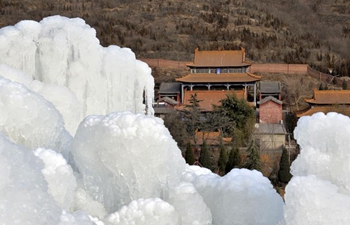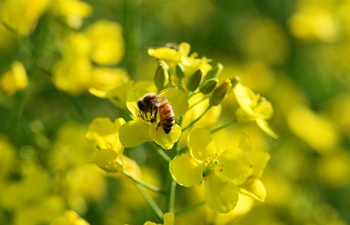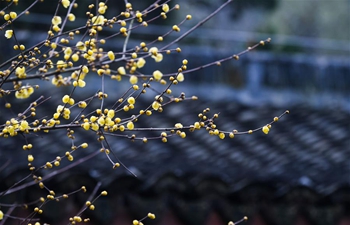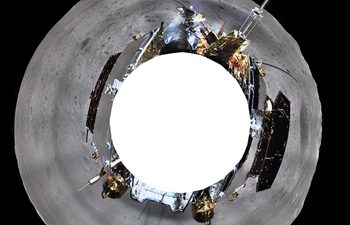BEIJING, Jan. 20 (Xinhua) -- The following are the highlights of China's science and technology news in the past week:
-- China will launch the Chang'e-5 probe by the end of this year to bring moon samples back to Earth, and there will be another three missions after Chang'e-5, according to the China National Space Administration.
The Chang'e-6 mission will be designed to bring samples back from the South Pole of the moon. The Chang'e-7 mission will carry out comprehensive surveys around the South Pole. The Chang'e-8 mission will test key technologies to lay the groundwork for the construction of a science and research base on the moon.
-- One of the cotton seeds carried to the moon by China's Chang'e-4 probe is the first ever to sprout on the moon.
A canister installed on the lander of the Chang'e-4 probe contained the seeds of cotton, rapeseed, potato and Arabidopsis, as well as eggs of the fruit fly and some yeast, to form a simple mini biosphere. No other plants were found growing.
-- Chinese nuclear physicist Yu Min, who was credited with developing China's first successful hydrogen bomb, died at the age of 93.
-- Three foreign scientists, Singaporean physics expert Shih Choon Fong, Norwegian biologist Nils Christian Stenseth and Japanese meteorologist Toshio Koike, were awarded medals of honor by the Chinese Academy of Sciences in Beijing, for their contribution to facilitating international cooperation in science and technology.
-- China will send 90 satellites on its Long March-6 carrier rocket into orbit from the Taiyuan Satellite Launch Center for an Argentine company, according to the China Great Wall Industry Corporation.
-- In the next five to 10, maybe 15 years, AI systems will still rely on labeled data, although many have found data-labeling a tough market in the past two years.
-- Chinese researchers have discovered that more than 60 percent of microplastics, with a diameter smaller than five millimeters, can be removed from wastewater.
-- Snow cover in Tianshan Mountains in northwest China's Xinjiang Uygur Autonomous Region, an important source of water resources, has seen a declining trend in the last 100 years.
-- Chinese scientists have developed a new moisture-wicking fabric with ultrafast water evaporation and quick-dry performance, which can be made into comfortable clothing for hot or humid environments.

















